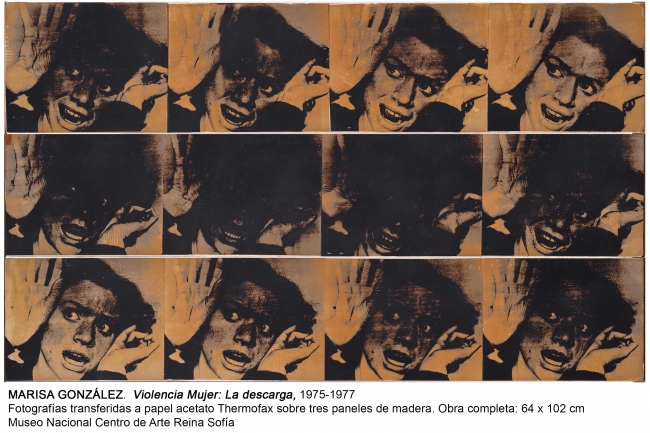Descripción de la Exposición
Primera exposición individual en Portugal del artista británico Dan Coopey cuyo texto será escrito por la curadora brasileña Kiki Mazzucchelli.
Basket weaving is possibly one of the oldest and most widespread forms of craft in human civilisation. Because of their perishable nature it is impossible to date the earlier forms of basketry precisely, but it is said that imprints of weaving have been found on fragments of clay pots dated around 20,000 BC.
Since 2015, Dan Coopey has been employing basketry techniques in order to produce sculptural objects in which the vessel's primary function is removed. A self-taught weaver, Coopey has learnt and incorporated several traditional methods that enable him to produce these unorthodox objects. Unlike regular baskets however his sculptures never have an open side. Executed in rattan, they range from simple cylindrical shapes to more elaborate sinuous designs that are sometimes painted in an unexpectedly pop palette that contrasts with the natural quality of the fibre.
In Dry, Coopey has chosen to leave the volumes unpainted, highlighting form and pattern instead. Although featuring similar shapes and sizes, these works are nonetheless handmade without a plan and formal decisions are taken during the process of weaving. Coopey is interested in the ancestral character of wickerwork and the fact that it is still practiced across cultures and geographies worldwide. This particular group of baskets have fluid forms that resemble pottery vases; their process of production described by the artist as “like a very slow motion version of throwing a pot”. Therefore, from a formal viewpoint they seem to fuse two of the most emblematic expressions of early human material culture, namely basketry and pottery, and perhaps this is why these works elicit a feeling of familiarity even stripped of their usefulness.
Like his previous rattan sculptures, the six slender forms are installed on the wall resting on a pair of oak rods. Also like in his previous works, each of these contains a piece of chewing gum (the mastication of gum is also a pan-cultural, ancient tradition, though for what reason the fashion of chewing grew up remains a mystery) and a small handcrafted tool or ornament. These can only be accessed, and the use value of the objects reinstated, by breaking open the rattan. In other words, artwork and utensil coexist in a mutually exclusive relationship.
The exhibition also includes two works made with appropriated Kuba cloths on which the artist performs subtle interventions. Kuba cloths are renowned for their elaborate and bold geometrical designs that combine weaving patterns and needlework, and are primarily used in ceremonial occasions, as symbols of wealth and as status objects during funerals by the Kuba people of the Democratic Republic of Congo. Woven from dried raffia palm, these textiles bear an evident material affinity with Coopey's basketry pieces – rattan is also a species of palm – although in this case a found object is transformed as opposed to the pieces that are made from scratch. Acquired from second-hand dealers, the cloths used by the artist are invariably damaged, with holes and rips scattered across their surface. These imperfections serve as guidelines for his interventions, which consist of adding a new layer of pattern to the fabric's design through his darning. The resulting patterns created by Coopey contrast both in colour and shape with those of the original cloth with the hues distinctively brighter; however the distribution of the organic forms possesses a level of visual harmony to the preexisting patterns.
The making of the Kuba cloth is traditionally a collective endeavour that involves an entire social group in all stages of production. Coopey does not simply consume these fabrics as decorative objects, but rather transforms them into something new by becoming another participant in their creative process. When de-contextualised into the economy of second-hand goods the Kuba cloth loses its original cultural significance and symbolic value, retaining only a western use-value for decorative purpose. However, when displaced once more and refashioned into an artwork it is given the possibility of starting a new life and acquiring new meanings that can reconnect it to another symbolic order. The shift from a specific cultural background where these cloths once held a high symbolic value into the territory of contemporary art doesn't necessarily mean that this same symbolism is lost, but that it has now entered a different episteme with its own symbolic values that will inevitably transform its original meanings according to current artistic discourse.
The final work in the exhibition is a group of giant pods from the Entada gigas plant. While his fabric works combine appropriation and intervention, here the operation performed by Coopey consists simply of the displacement of a natural readymade into the gallery context. These formally impressive beans, with their red coloured skin and seemingly pre-historic gigantism evoke a sense of extended time that is also present in the basketry and fabric weaving techniques embraced by Coopey, both in relation to the slowness that characterises handmade production and for being some of the earliest techniques known to humankind. Moreover, although the dried beans appear dead they contain seeds and therefore posses the potential of generating new life if introduced to moisture. It is precisely this sense of renovation and continuity that pervades all the works featured in Dry. Ancient types of knowledge may be only preserved in the fragments of dried out material culture, but they always have the potential to evolve into unprecedented forms that encompass past and present with renewed symbolic power.
Kiki Mazzucchelli

Exposición. 21 may de 2025 - 22 sep de 2025 / Museo Nacional Centro de Arte Reina Sofía (MNCARS) / Madrid, España

Formación. 30 oct de 2025 - 11 jun de 2026 / Museo Nacional del Prado / Madrid, España